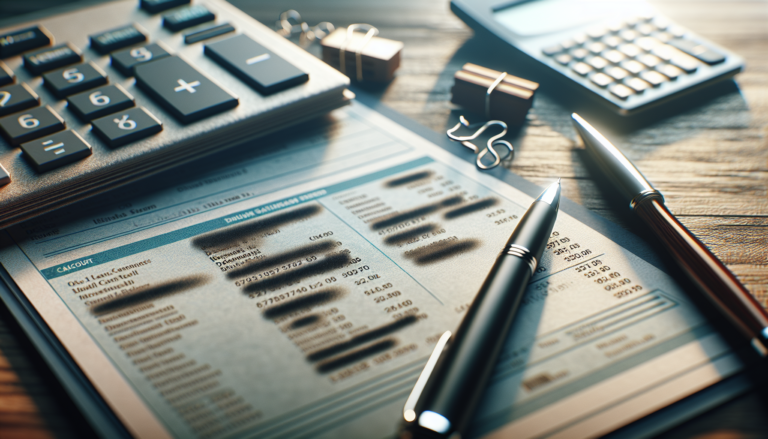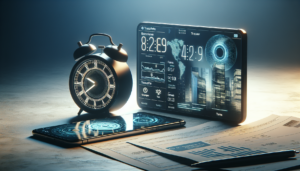Bank account numbers are an essential part of our financial lives, but have you ever stopped to think about how they work? In this article, we’ll dive into the details of bank account numbers, including how many digits they typically have, what the numbers mean, and how they keep your money secure.
Understanding Bank Account Numbers
What is a Bank Account Number?
A bank account number is a unique identifier assigned to your bank account. It’s used by your bank to keep track of your account and ensure that money is deposited into or withdrawn from the correct place. Think of it like an address for your money.
Typical Length of Bank Account Numbers
So, just how many digits are in a bank account number? The answer can vary, but most bank account numbers are between 8 and 12 digits long. Some banks may use account numbers that are up to 17 digits.
Here are a few examples of bank account number lengths from major U.S. banks:
| Bank | Account Number Length |
|---|---|
| Chase | 12 digits |
| Bank of America | 12 digits |
| Wells Fargo | 10-12 digits |
Why Bank Account Numbers Vary in Length
You might be wondering why there’s a range in the number of digits used in bank account numbers. It largely depends on the bank’s own systems and how many accounts they expect to have. A bank with more customers is likely to have longer account numbers to ensure each one is truly unique.
Additionally, some banks may use different numbers of digits for different types of accounts, like checking and savings. The important thing is that your full account number will be unique to you.
Components of a Bank Account Number
Routing Number
In addition to your unique account number, there’s also something called a routing number. This is a 9-digit number that’s specific to your bank. It’s used to identify the financial institution during transactions.
When you give someone your account number for them to transfer money or set up direct deposit, they’ll usually need your routing number as well. This ensures the money goes to the right bank.
Check Number
If you’ve ever looked closely at a paper check, you might have noticed a series of numbers printed along the bottom edge. The last group of numbers on the right is typically your unique account number. But what about the numbers on the left?
Those are called check numbers. They’re used to identify each individual check for that account. When you write a check, the check number helps your bank keep track of which check is being used for that transaction.
Types of Bank Accounts and Their Numbers
Checking Account Numbers
Checking accounts are designed for frequent transactions, like making purchases, writing checks, or withdrawing cash. The account numbers for checking accounts, as we’ve discussed, are unique identifiers to keep track of these many transactions.
When you open a checking account, your bank will assign you an account number. You’ll use this number for setting up direct deposits, making online payments, or providing account information to others for transfers.
Savings Account Numbers
Savings accounts are intended for just that: saving money. They often earn interest, so they’re a good place to keep money you don’t need for daily spending. Just like checking accounts, savings accounts also have unique account numbers.
If you have both a checking and savings account with the same bank, you’ll likely have different account numbers for each. This helps the bank differentiate between the two account types and apply transactions and interest accordingly.
Security Measures for Bank Account Numbers
Protecting Your Bank Account Number
Now that we know the importance of bank account numbers, it’s clear that protecting them is crucial. Your account number is the key to accessing your money, so you should be very cautious about sharing it.
Some key tips for protecting your bank account number:
- Don’t share your account number online or through unsecured channels
- Be cautious of phishing scams that ask for your account information
- Report lost or stolen checks to your bank immediately
- Monitor your account regularly for suspicious activity
Emerging Security Technologies
Banks are always working on new ways to keep your account numbers and money secure. Some emerging technologies in this area include:
- Biometric identification, like fingerprint or facial recognition
- Two-factor authentication for account access and transactions
- Tokenization, which replaces sensitive data with a unique digital identifier
- AI and machine learning to detect and prevent fraudulent activity
As these technologies become more widespread, the security of bank account numbers and financial transactions will continue to strengthen.
International Bank Account Numbers
SWIFT Codes
If you’ve ever sent money internationally, you might have been asked for a SWIFT code in addition to the account number. SWIFT stands for the Society for Worldwide Interbank Financial Telecommunication. It’s a network that enables financial institutions worldwide to send and receive information about transactions.
A SWIFT code, also known as a BIC (Bank Identifier Code), is typically 8 or 11 characters long. It uniquely identifies a specific bank, helping to ensure international transfers are routed correctly.
IBAN (International Bank Account Number)
Some countries also use an IBAN, or International Bank Account Number, for international transactions. This is a standardized format for identifying bank accounts across national borders.
An IBAN includes a country code, check digits, and a basic bank account number, which is the domestic account number used within a country. The IBAN format ensures that transactions can be processed automatically, reducing errors and delays in international transfers.
See also:
- What Number Does Mastercard Start With? Understanding Mastercard Numbers
- Where Is Bank Account Number on Check? Find It Easily
- Where is the Security Code on American Express? Find It Easily
- How to Transfer Money to Someone Else’s Bank Account Online
- How Long Can My Bank Account Be Negative? Understanding Overdraft Limits






